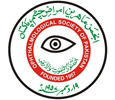ISSN 0886-3067



Volume No 39 Issue No 3
Role of Conjunctival Swab in Diagnosis of Patients with COVID-19
Purpose: To investigate the role of conjunctival swab in diagnosing COVID-19 and to find out correlation between COVID-19 severity and conjunctival swab positivity. Study Design: Analytic Correlational study. Place and Duration of Study: Primasatya Husada Citra Hospital Surabaya, Indonesia in March 2021. Method: Forty-seven patients diagnosed with COVID-19 and admitted in the hospital during the month of March 2021 were included. Socio demographic data, symptoms, ocular manifestations, and result of reverse transcription-polymerase chain reaction (RT-PCR) from nasopharyngeal and conjunctival swabs for SARS-CoV-2were collected. Conjunctival swab was taken 1 – 4 days after the nasopharyngeal swab. Patients were divided into two groups; group with ocular symptoms and the other group with ocular signs. Patients with ocular signs had chemosis, conjunctival hyperemia, and eye discharge. This group also included patients who were on Ventilator and could not complain about their ocular problems. Data were analyzed using Spearman correlation analysis with p-value less than 0.05 considered as statistically significant. Results: Conjunctival swab PCR was negative in 95.7% patients. Correlation between COVID-19 severity and conjunctival swab was also not significant (P = 0.589). Only 2 subjects (4.3%) who had ocular signs and symptoms revealed positive PCR (p> 0.05). Similarly severity of the disease was also not correlated with positivity of conjunctival swab (p>0.05). Conclusions: The limited sensitivity of conjunctival specimens based on the result of this study showed that the diagnostic value of conjunctival specimens for the detection of SARS-CoV-2 is low.
HTML Full Text | Complete PDF